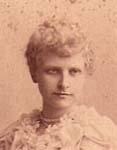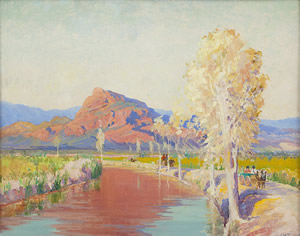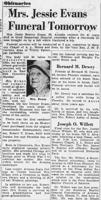
|
Jessie Benton SteeseBorn: Died: 1954 |
Mother: Amanda Melvina Bowers (1834 - 1904) Father: Jacob Steese (1819 - 1881) |
|
Married: Denver Evans (? - 1920) | |
|
Taken from The Arizona Women's Hall of Fame:  Granite Mountain near Phoenix Internationally respected artist Jessie Benton Evans came to Scottsdale in 1911, making the central Arizona city her home for the next 43 years until her death in 1954. While a resident of Arizona, Jessie Benton Evans, or “Madame Evans” as she was known, became one of the most outstanding artists in the history of Arizona and one of the foremost cultural leaders of the area. She was renowned for her love affair with the Arizona landscape according to Rudy Turk, Director of the Arizona State University Art Museum. Jessie Benton Steese was born in Uniontown, Ohio to Jacob Steese, a hardworking country doctor and his wife, Amanda on March 24, 1866. Blessed with a father who encouraged her imagination with colorful tales of historic places, heroes and romance, she blossomed into an artistic young woman. She began her formal artistic education at prestigious Oberlin College, augmented with frequent trips to Europe. Wooed by Chicago fruit importer Denver Evans, she married on August 12, 1886. Adventurous and “liberated”, the new Mrs. Evans enjoyed a special relationship with her husband, of which grandson Walter Ben Ware said, “She was lucky to have the financial support of a husband who loved and understood her and let her live her life.” Several years after her marriage, she returned to Europe with young son Robert, to advance her art career. Continuing her transatlantic education she received a diploma from the Chicago Art Institute in 1904. She also studied with such respected American artists as Charles Hawthorne, Lawton Parker, William Chase, Frederick Freerer and such European notables as Roberto Rascovich and Professor Zila Zanetti of Italy. Her strikingly classical face framed by long blond hair became familiar in the European cultural centers. Soon she was exhibiting her work through- out the European continent. Showings included important galleries such as the Paris Salon and the Paris Internationale. While still a young woman, Jessie, who spoke five languages fluently, translated the original “Romeo and Juliet” from Italian to English during a stay in Italy. When Jessie Benton Evans decided to settle in Scottsdale, she brought the flavor of Europe with her. Purchasing 40 acres at the base of Camelback Mountain, she and her husband Denver Evans created an Italian styled villa. Her home soon became a cultural crossroads for area people interested in the arts, whether sculpture, drama, painting, music or literature. Jessie Evans, never an elitist in her genre or ethnicity, was most instrumental in encouraging George Cavelliere’s work in wrought iron. She also encouraged the artistic development of artist Jesus Corral, who later founded Los Olivos. In addition, she taught Cruz Medina and others to paint, sculpt and carve. Evans held weekly artistic gatherings, which she called “salons” open to all who were interested in the arts in the Phoenix area. She often invited important guests like author John Galsworthy and Irish tenor John McCormack to address the salon, and sponsored dramatic readings or music recitals. Before the area had a formal cultural institution to support the arts, Jessie Evans opened her home. In 1929 when asked in an interview by the American Magazine of Art the reason she chose to live and paint in Arizona, Evans replied: “I think that real beauty exists where we least expect it, in an unrevealed sense, disclosing itself only as we earnestly search for it, thus stimulating our creative faculties. The desert seems to me always alluring and illusive; its spirit is sweeping and vital and its voices form a chorus of endless song. It never allows one to work in an imitative way, which would certainly rob it of its charm. There is a virgin freshness in the hills and barely trodden trails in the southwest that one misses in tired, worn Europe.” The American Magazine of Art called Jessie Evans the “Dean of the artists in the Salt River Valley.” She is listed as the recipient of the first prize at the Phoenix Municipal Exposition, recipient of two first landscape prizes and a second portrait prize at the Arizona State Fair. The Municipal Collections of Phoenix and Akron, Ohio own pieces of her work; the Santa Fe Railroad Company owns pieces of her work as well as the University Art Museum, the Phoenix Art Museum, the University Club, Vanderpool Art Association of Chicago and private collectors around the world. Evans influenced through example, especially with the construction of her Italian styled villa and later in her work on early area resorts with son Robert, an architect and artist in his own right. Together they formulated the basis for the stylish and sophisticated resorts in the Phoenix metropolitan area. Robert Evans was the first architect in the area to work with adobe, designing many homes in the Spanish and Mediterranean style, later seen in the Jokake and Paradise Inns. | ||
